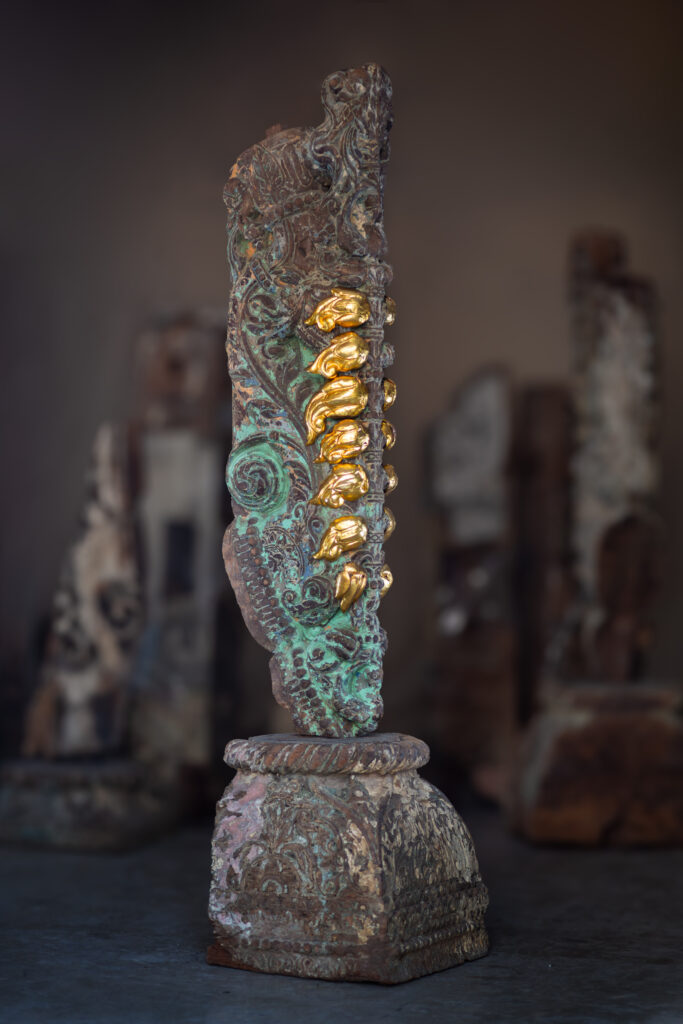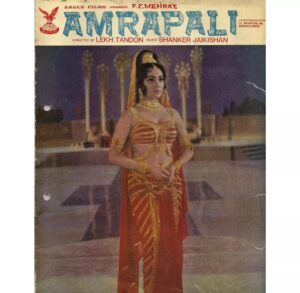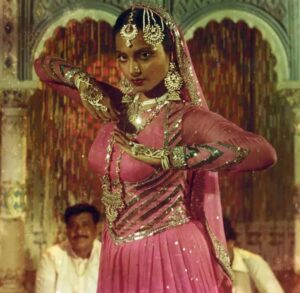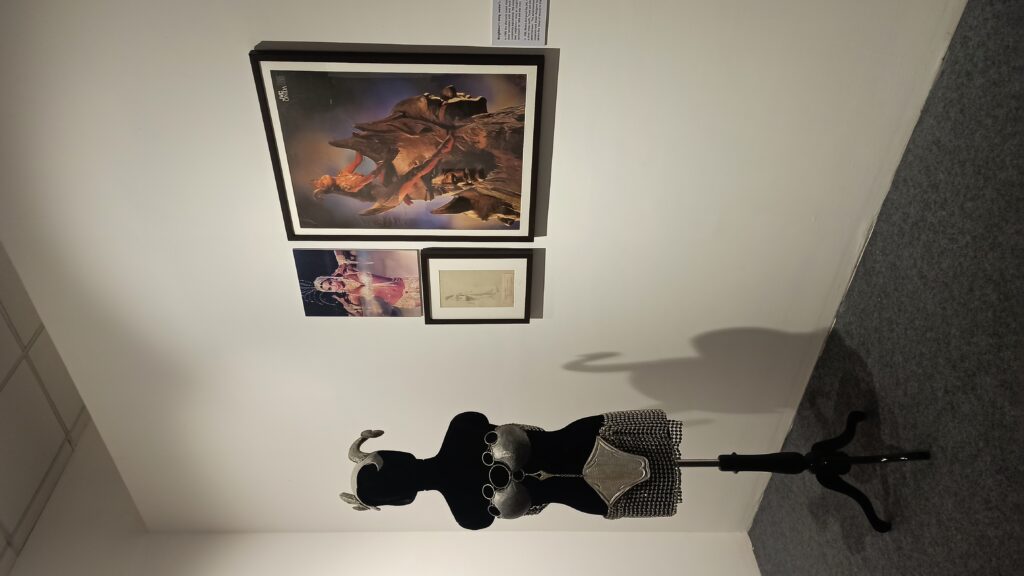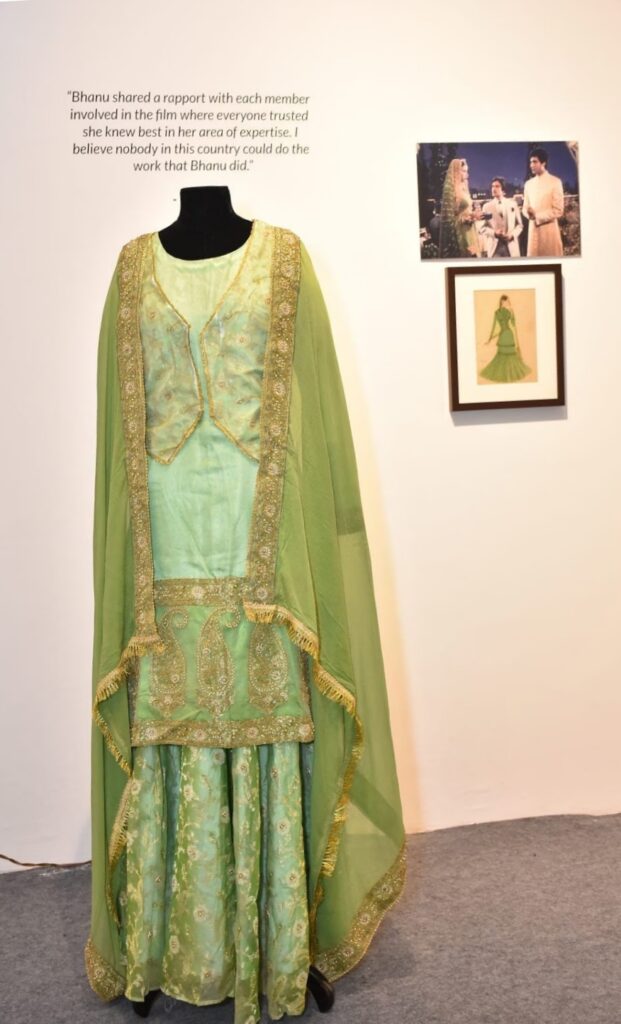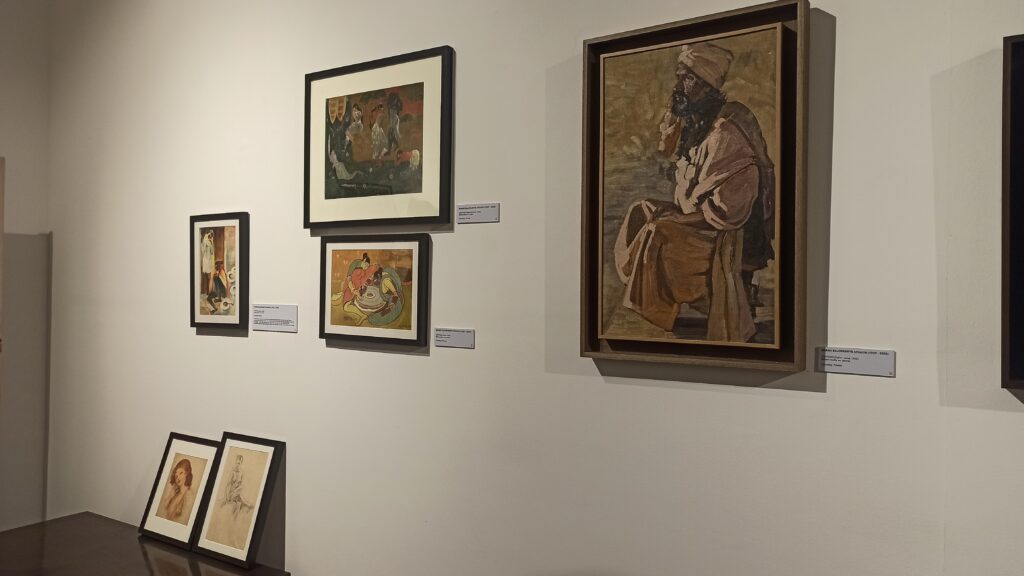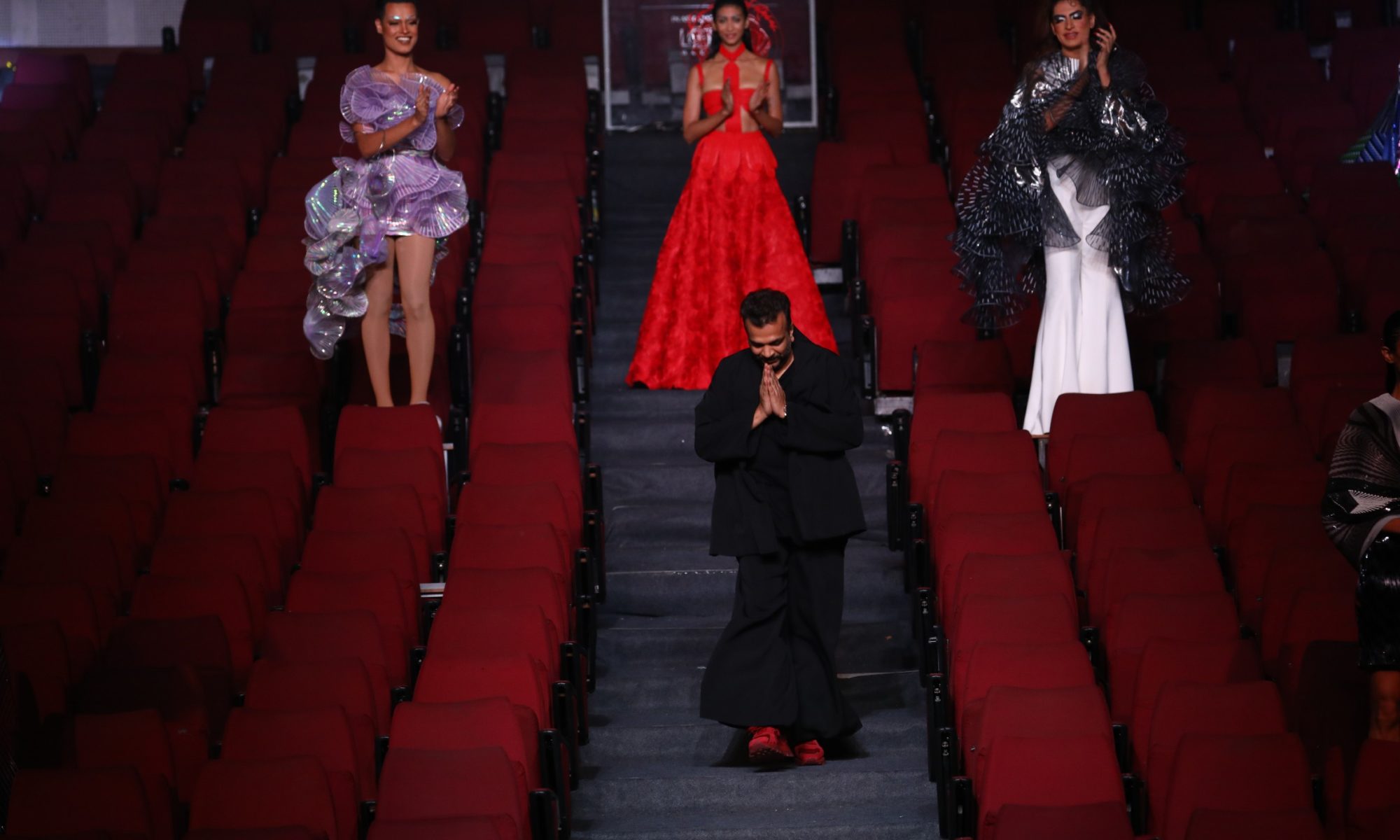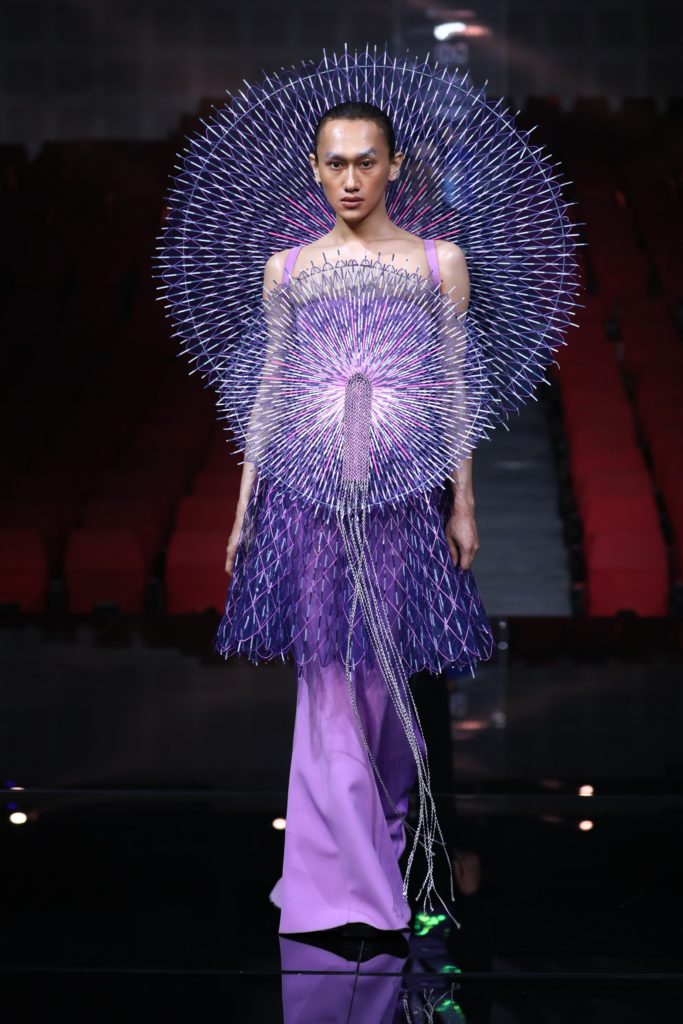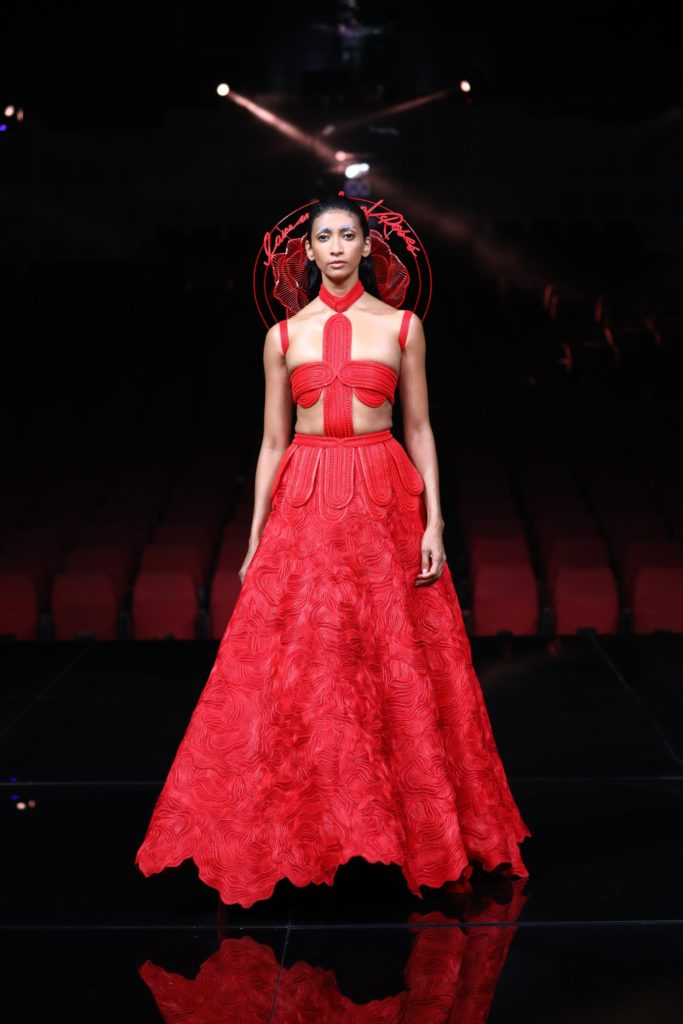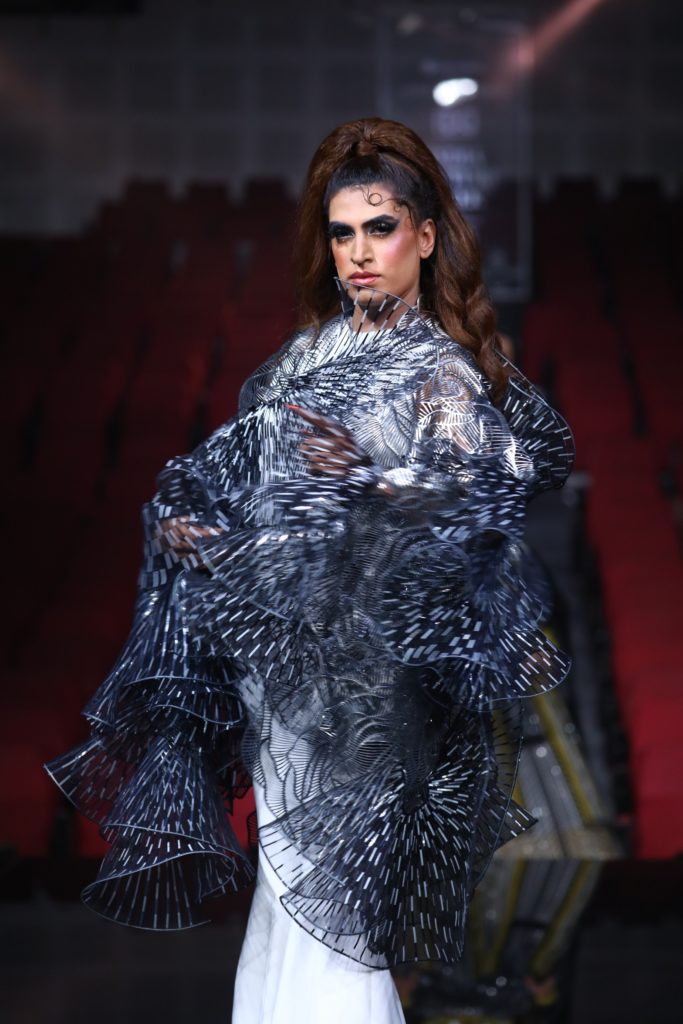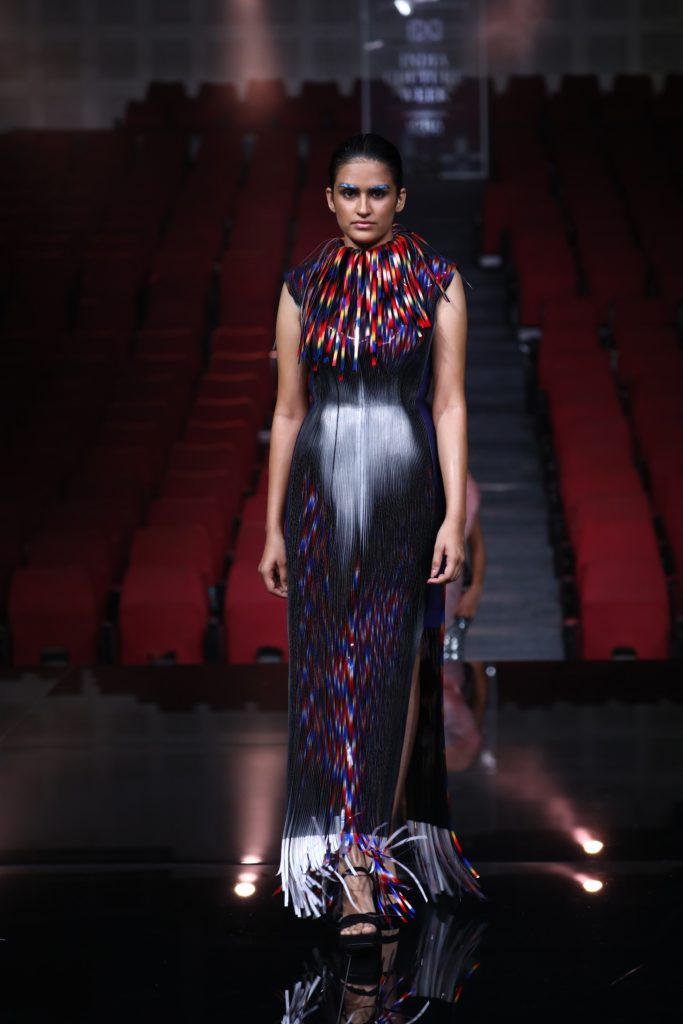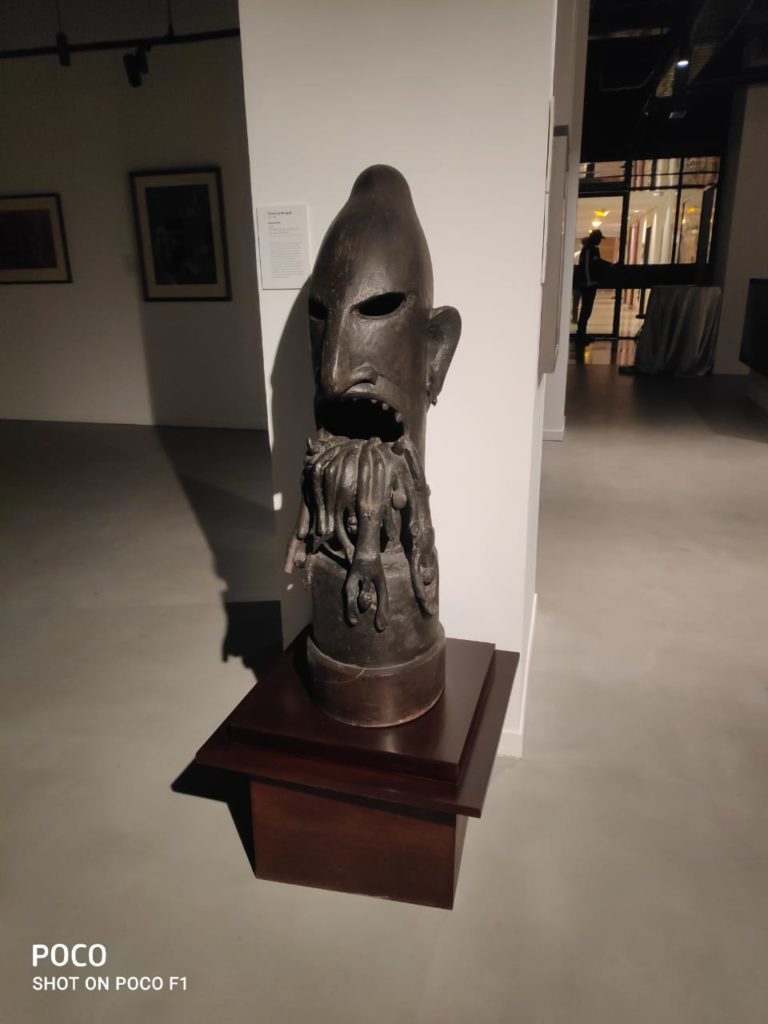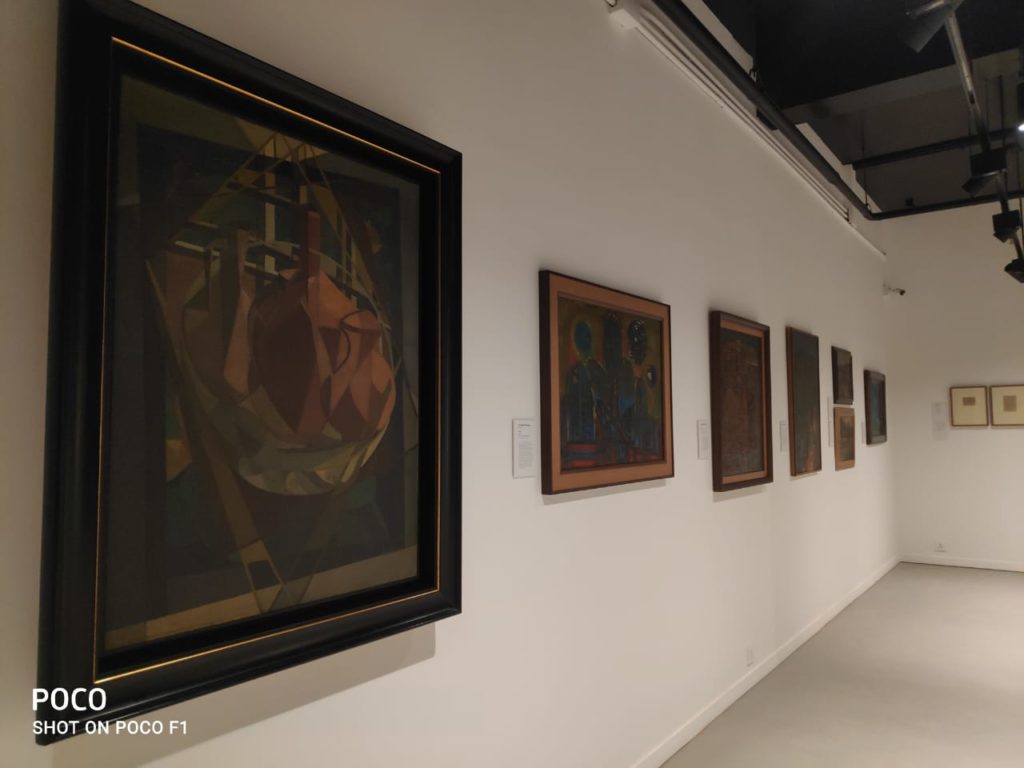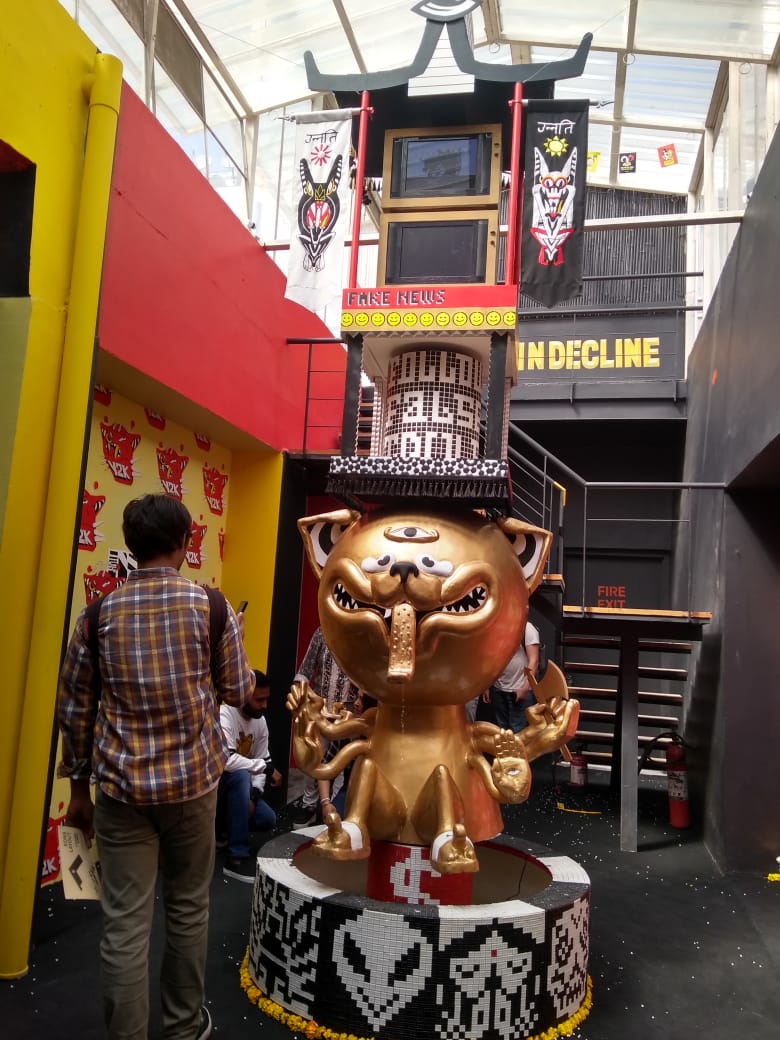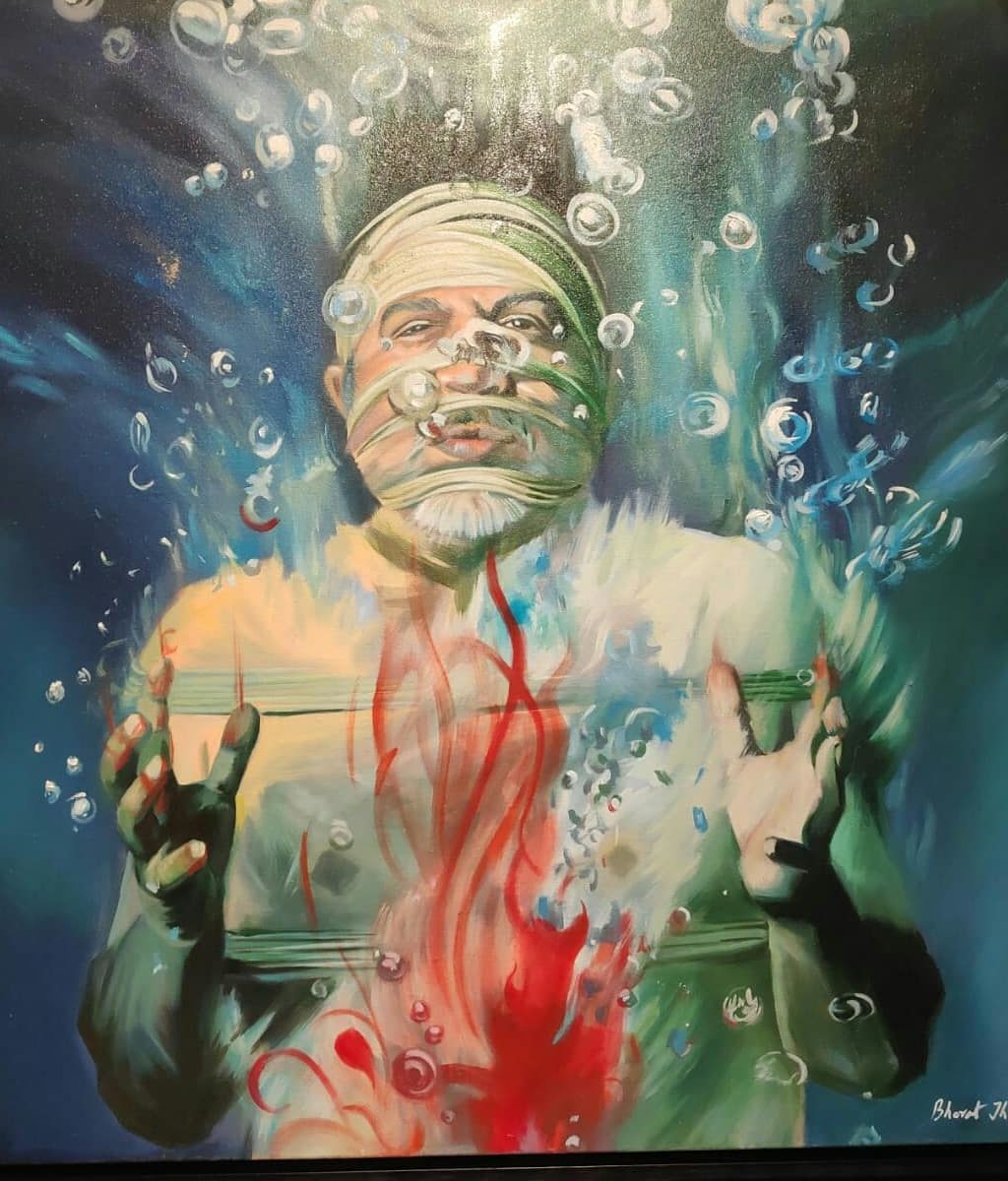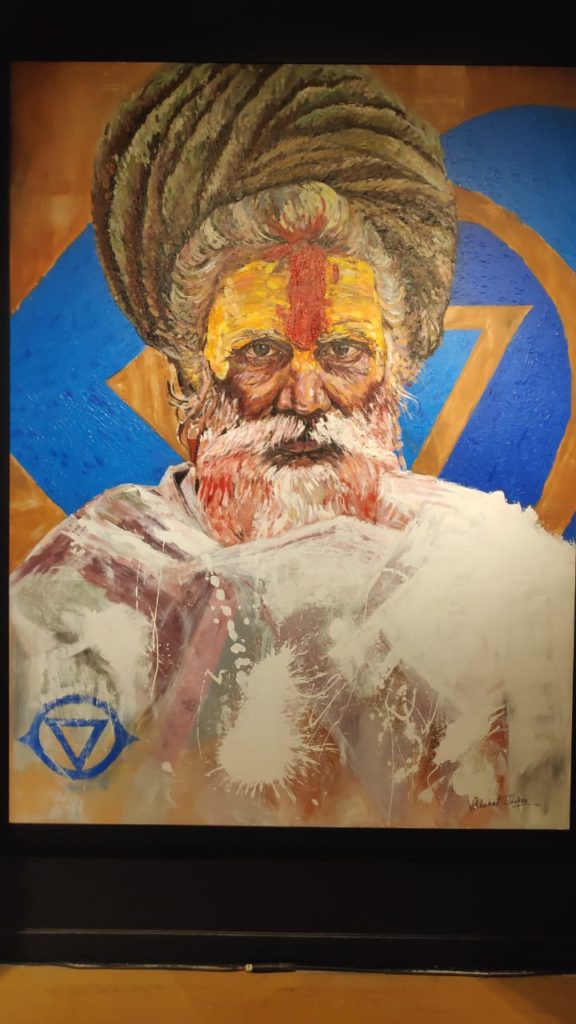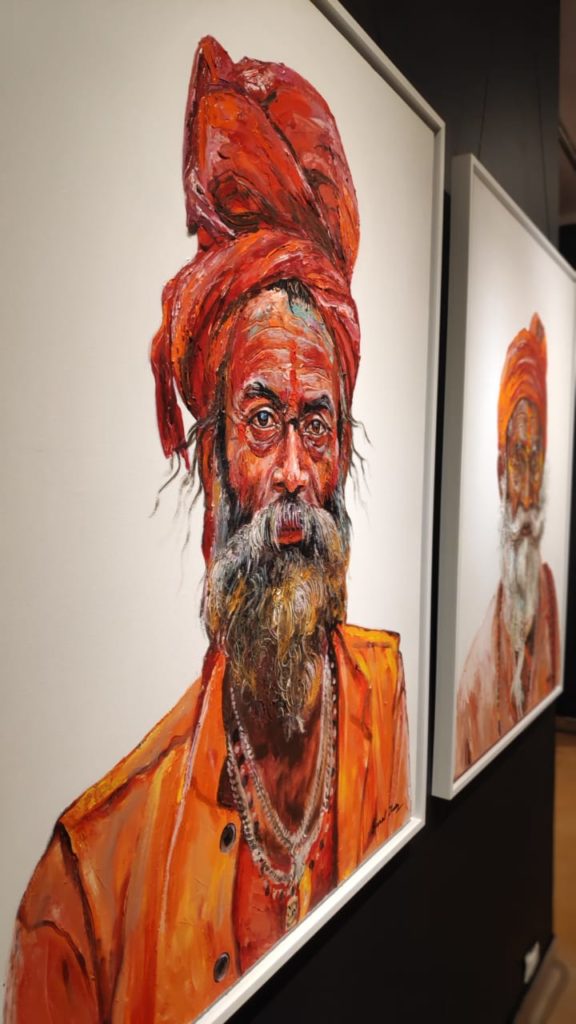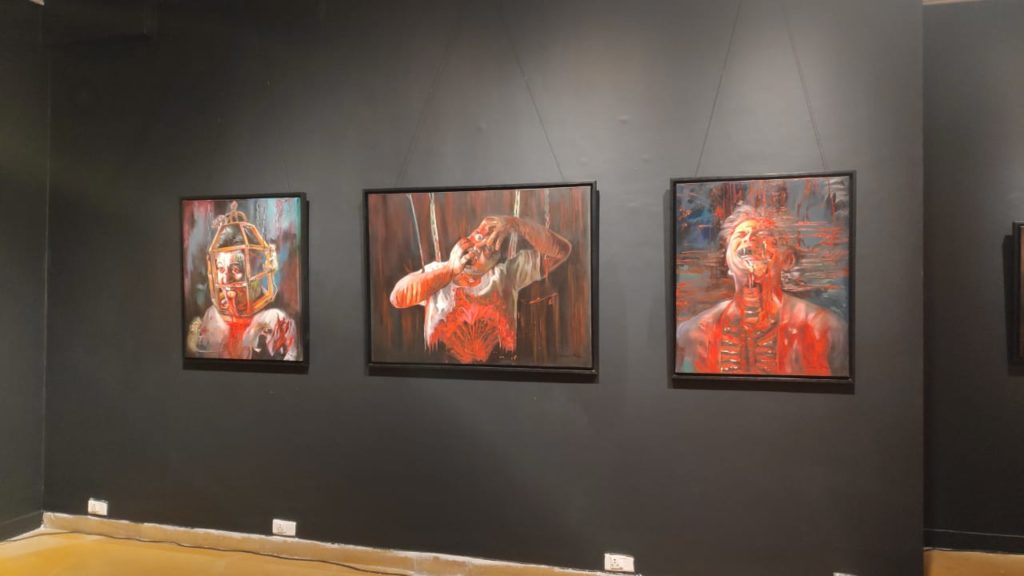Step into the enchanting world of Raj Shahani’s exhibition, “Mukhowta,” where wood meets metal, and ancient traditions merge with contemporary art. Until February 29th, Bikaner House serves as the canvas for Shahani’s unique series of sculptures, inviting visitors to explore the intersection of materiality, spirituality, and self-reflection.
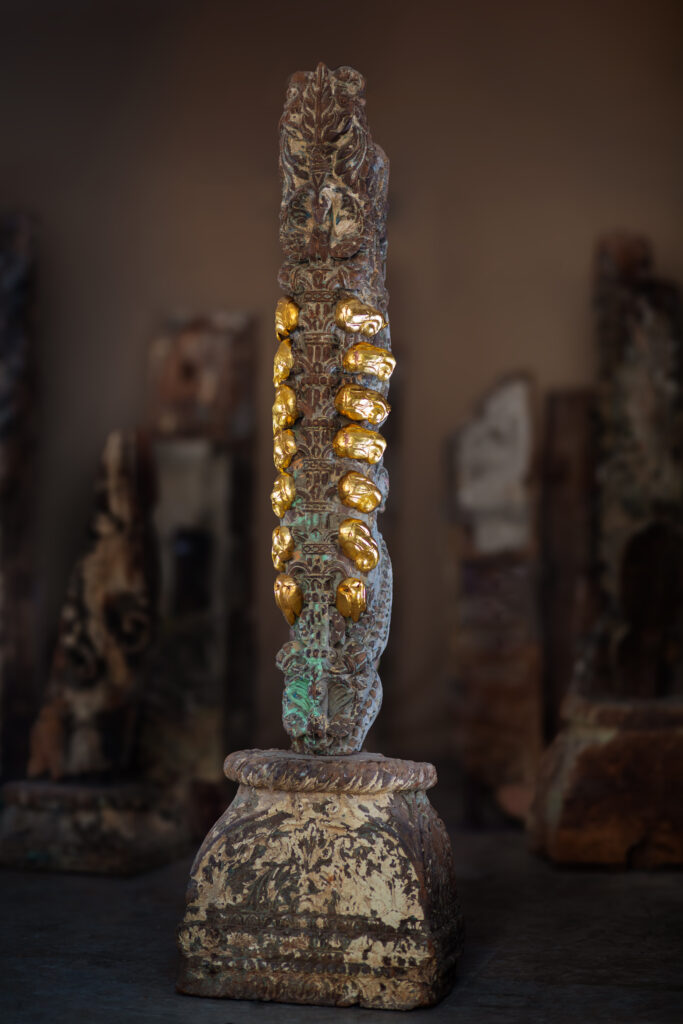
A Forest of Stories:
In “Mukhowta,” Shahani crafts a sacred forest using antique wooden corbels arranged in a circular formation. Each piece, adorned with a metal covering of copper, gold, silver, panchadhatu, bronze, German silver, brass, and steel, conceals a deeper narrative. Drawing inspiration from the sacred Snake Groves of Northern Malabar, the exhibition weaves a constellation of wood and metal within the Mughal Fountain Rotundas, offering a visual journey reminiscent of the Snake Groves’ mystical allure.
Reflecting Alter Egos:
Behind the shining plates of metal lies more than meets the eye. Shahani, with a keen artistic touch, repairs and accentuates each wooden object, symbolizing the masks we wear—the “Mukhowta” that hides our authentic selves. The exhibition challenges us to ponder the ethereal presence of sculpture materials and consider the dichotomy of our own adorned exteriors.
Serpentine Guardians:
Central to the exhibition are two fountains adorned with serpent sculptures, dubbed “Sarpa Devtas.” Inspired by the sacred Snake Groves of Kerala, these jute-rope serpents symbolize nature’s protectors, beckoning belief in the sanctity of the environment. As water sprouts toward the sky, the serpents stand as guardians, encouraging us to reflect on our connection with nature and its role in safeguarding our well-being.
Queerness, Gaze, and Catharsis:
Priyanka Kheterpal of AnamKara reflects on Shahani’s art practice as a profound exploration of queerness, gaze, and the therapeutic power of sculpture. In a world grappling with a mental health pandemic, art becomes a soulful companion—a notion beautifully translated as “AnamKara” in Celtic.
Masks and Magical Realities:
Delving into the history of visual culture in India, the exhibition explores the undeniable existence of masks as spiritual tools. Drawing parallels with the Theyyam performances in Northern Kerala, Shahani’s art pays homage to shamans and divine presence, captivating audiences with esoteric and magical experiences.
Dichotomy of Sacredness and Pollution:
Several sculptures, such as ‘Pitala (Brass)’ and ‘Tambra (Copper),’ delve into the memories held within the veins of logs, while others, like ‘Swarna (Gold)’ and ‘Rajata (Silver),’ adorn peacocks with precious metals. Shahani cleverly uses materials like bronze, tin, steel, and aluminum to fill cavities, symbolizing the incomplete nature of our adorned selves. The exhibition challenges us to contemplate the sacredness and pollution inherent in our modern psyche.
“Mukhowta” is not just an exhibition; it’s an immersive journey into the realms of art, spirituality, and self-discovery. As you explore Raj Shahani’s sculptures, let the stories hidden within wood and metal prompt reflection on your own ‘Mukhowta’—the mask you wear—and the profound connection between nature, art, and the human soul.
